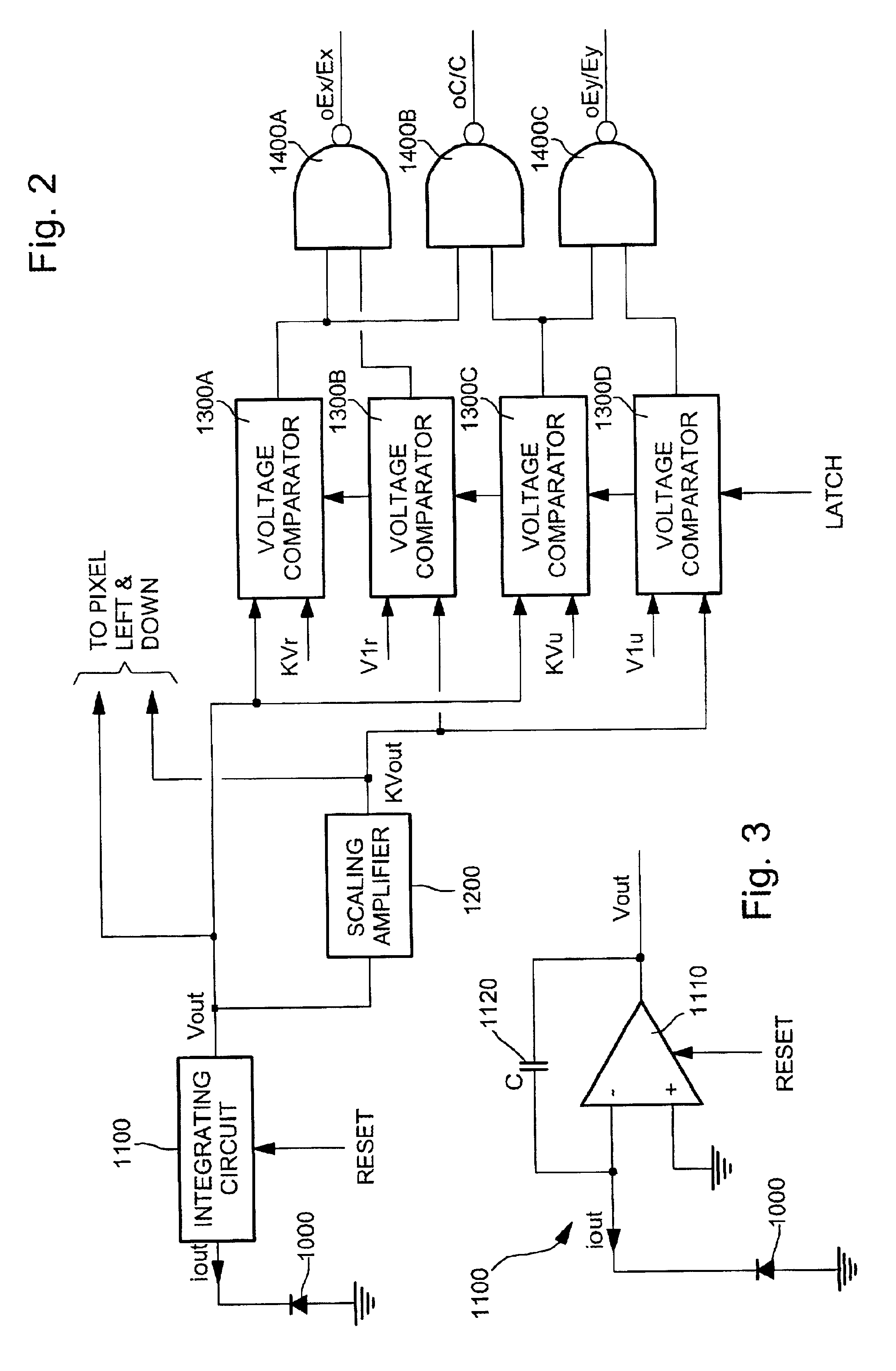Method, sensing device and optical pointing device including a sensing device for comparing light intensity between pixels
a sensing device and light intensity technology, applied in the field of pointing devices, can solve the problems of specific circuitry, increase the power consumption and complexity of the sensing device, reduce the available die area, etc., and achieve the reduction of noise sensitivity, power consumption and complexity, and the effect of die area
- Summary
- Abstract
- Description
- Claims
- Application Information
AI Technical Summary
Benefits of technology
Problems solved by technology
Method used
Image
Examples
Embodiment Construction
FIG. 4 is a generalized schematic bloc diagram of an optical pointing device in accordance with the present invention. It comprises a photodetector array 420 including a plurality of pixels, this photodetector array 420 being connected to processing means 400 which consists, in a non limiting manner, of a micro-controller, microprocessor or other adequate logic circuitry for processing the signals outputted by the photodetector array 420. As schematically illustrated in FIG. 5, the photodetector array 420 is for instance a regular array, preferably square, having M pixel rows (parallel to axis x) and N pixel columns (parallel to axis y). A typical configuration is for instance a 15.times.15 pixels array. Each pixel of the photodetector array 420, designated by reference numeral 4000, essentially includes a photosensitive area 1000 forming a photodiode (or alternatively a phototransistor) and active circuitry 4500 including preamplifier means and comparator circuits for determining e...
PUM
 Login to View More
Login to View More Abstract
Description
Claims
Application Information
 Login to View More
Login to View More - R&D
- Intellectual Property
- Life Sciences
- Materials
- Tech Scout
- Unparalleled Data Quality
- Higher Quality Content
- 60% Fewer Hallucinations
Browse by: Latest US Patents, China's latest patents, Technical Efficacy Thesaurus, Application Domain, Technology Topic, Popular Technical Reports.
© 2025 PatSnap. All rights reserved.Legal|Privacy policy|Modern Slavery Act Transparency Statement|Sitemap|About US| Contact US: help@patsnap.com



